#japan audio launch
Text


10 notes
·
View notes
Text
Balance and difficulty adjustments featured in latest patch for Sonic Frontiers 3rd post-launch DLC
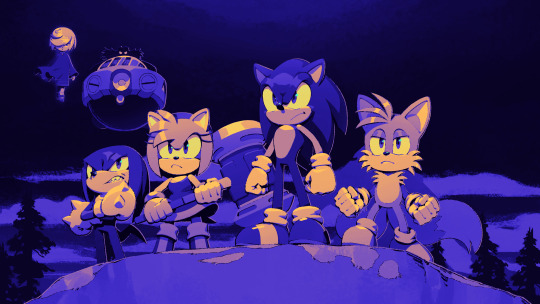
The third and final post-launch downloadable content update for Sonic Frontiers has received a significant patch late Wednesday.
Released to all major platforms, version 1.41 of Frontiers included several bug fixes, balancing patches, and movement improvements for the last content update of 2023, "The Final Horizon."
Here are the official patch notes, courtesy of SEGA of Japan:
Made Balance Adjustments to Easy Mode
Trial Towers: New level designs have been added.
Towers of the Master: The default difficulty and Sonic's attack level have been adjusted.
Master King Koco's Trial: Your maximum Ring capacity and the health of each Titan have been adjusted.
Made changes to some of the controls for Amy, Knuckles and Tails
The parry window for perfect parries was adjusted to be more forgiving. (The window will be extended even further when playing on Easy.)
Knuckles' maneuverability during gliding has significantly increased.
Adjusted the stats of some special moves for Amy, Knuckles, and Tails after leveling them up
The attack and defense of certain special moves for Amy, Knuckles, and Tails after they level up have been increased.
Made it Easier to Retry After a Game Over
The pink panels in the Trial Towers will respawn after a certain amount of time has passed and you are a certain distance away.
If you make a mistake before a Cyber Space checkpoint and you have to restart from the beginning, the timer will now reset so you don't need to manually restart. (Excluding Cyber Space Challenge)
Various bug fixes, including the issue where audio would not play during sub-events, have also been addressed.
#sonic frontiers#sonic frontiers the final horizon#sonic frontiers update#sonic the hedgehog#miles tails prower#amy rose#knuckles the echidna#sonic#sega#gaming#sonic news
309 notes
·
View notes
Text
Meiji Tokyo Renka: Full Moon for Switch, PC launches October 3
From Gematsu

"High collar nice guy” otome visual novel Meiji Tokyo Renka: Full Moon will launch for Switch and PC via Steam on October 3 worldwide with Japanese audio and English, Japanese, Traditional Chinese, and Simplified Chinese subtitles, publisher dramatic create and developer MAGES. announced.
Meiji Tokyo Renka: Full Moon first launched for PS Vita on August 25, 2016 in Japan. It is a ported version of Meiji Tokyo Renka, which originally launched for PlayStation Portable, featuring a new route for one of the characters, as well as other new content.
Here is the story synopsis, via the official website:
About
Meiji Tokyo Renka: Full Moon is a historical romance fantasy game in which the main character travels back in time to the Meiji era and meets and falls in love with the great figures of history.
Key Features
Powered-Up Version of Meiji Tokyo Renka: Full Moon – With the addition of Tosuke Iwasaki’s (voiced by Yoshimasa Hosoya) route, Meiji Tokyo Renka: Full Moon (released in August 2016) is now available on Switch and Steam, featuring even more new elements!
What is Meiji Tokyo Renka: Full Moon? – Meiji Tokyo Renka: Full Moon is a historical romance fantasy game in which the main character travels back in time to the Meiji era and meets and falls in love with the great figures of history.
Additional Content – Newly drawn key visual illustration by the artist Karu. Addition of a newly written bonus scenario for the Switch and Steam version.
Multilingual – Language support for Japanese, English, Simplified Chinese, and Traditional Chinese. (Voice-overs in Japanese only.)
Story
The main character, Mei Ayatsuki, an ordinary high-school girl, is transported back in time to the Meiji era by the self-proclaimed magician Charlie, whom she meets on the night of a red full moon. It was a slightly mysterious Meiji period “Tokyo” where the existence of Mononoke was recognized.
With Charlie’s guidance, she arrived at the Rokumeikan. The protagonist sneaks into the party and is met by historical figures such as Ougai Mori, Syunso Hishida, Otojiro Kawakami, Kyoka Izumi, Gori Fujita, Yakumo Koizumi, and Tosuke Iwasaki.
Through her interaction with them, the protagonist realizes that she is a “Tamayori” and has a highly prized ability in the Meiji period that allows her to see Mononoke. Having ability changes her relationship with them…
In this unfamiliar time, love affairs grow as she comes into contact with good-looking men during her daily life. Will the protagonist be able to return to her original time or…? Does love transcend time and space?
How does it end?
Watch the opening movie below.
Opening Movie
youtube
#Meiji Tokyo Renka: Full Moon#Meiji Tokyo Renka#dramatic create#MAGES.#otome game#visual novel#Gematsu#Youtube
89 notes
·
View notes
Text
Introduction - What is VOCALOID?
Hello everyone, Shimmer here! This is my first post in this guide blog thingy. I thought it would be a good idea to explain what VOCALOID actually is before I jump into how to use the software. Otherwise, it would be like baking a cake without knowing what cakes are.
So, let’s start by addressing what VOCALOID is not.
VOCALOID is NOT an anime series. Although Hatsune Miku made cameos in "Dropkick on My Devil!", she never originated from an anime series because she is NOT an anime character.
Second, VOCALOIDs are not those crappy AI voice models. You know, those weird “voicebanks” where you can make Spongebob Squarepants sing "7 Rings" or have Cartman from South Park rap "INDUSTRY BABY"? Yeah, those are actually illegal renditions of celebrity voices without the knowledge of the voice actors/influencers/singers whose voices were used to make the models. You just put the models over an audio track, and boom. Lazy, illegal shit.
youtube
Finally, this is just common sense, but VOCALOID did not originate from Project Sekai! Colorful Stage! The Cryptonloids (Miku, Rin, Len, Luka, Kaito, and Meiko) have existed long before the game was released; VOCALOID 1 was released in 2004, while the money making machine was launched in Japan in 2020. That is a gap of sixteen years, and if you compare the time between Hatsune Miku V2's release and Project Sekai, we have another thirteen year difference there.
With that being said, what *is* VOCALOID?
The best definition I can give you is that it is a digital singing synthesizer. Basically, it is an instrument, but instead of piano notes, you get vocals.

youtube
And no, *this* AKITO is not associated with the Akito Shinonome from Project Sekai.
To advertise this voicebanks and increase their appeal, Crypton, VSINGER, AH-Software Co., Internet Co. Ltd, and many other companies that make voicebanks for this software have cute or hot anime-style avatars designed for their box art. This was a great marketing scheme in my opinion, because wouldn't you be more inclined to purchasing something if it looks aesthetic, kawaii, or epic? Just look at GUMI's design!

Alright, I have a feeling I may have bored most users who are reading this weird info-dump, so I am going to add one final, important point. Remember our wood analogy? Well, we have the workbench (VOCALOID), and the wood (the voicebank(s) of your choice). Making a desk for instance would be like making a cover of a song. But people can make the same kind of desk with an entirely different appearance or texture. Similarly, a lot of producers can make covers of the same song, but they can sound entirely different in regards to their pitch, tone, or melody. This aspect is known as "tuning".
Tuning is basically the process of editing the properties of a voicebank and the notes/lyrics they are singing to create a specific sound. People can tune the same song in different ways. For instance, listen to the original "Rolling Girl" by wowaka, and then these covers. They are all the same song, but tuned in entirely different ways.
Below is the original song:
youtube
And these are all covers:
youtube
youtube
youtube
youtube
Also yeah, that last cover is mine, it's my blog, I can promote my content if I want to)
I hope that just by listening to these you can see how tuning can vary from individual to individual. Its all a matter of how you control the parameters of the singer.
So yeah, I yapped enough so I'm gonna end this infodump right here. I'm not surprised if you guys are still confused, so I'm going to leave some helpful resources down below as these people are better at explaining shit than I am.
youtube
youtube
youtube
My next post will involve some common terminology used in the VOCALOID community, such as “VSQx”, or “pitchbending”.
Goodbye for now!
22 notes
·
View notes
Text
News regarding AA456
I have been planning on getting the Japanese physical Switch version due to my preference for physical games over digital, but I just cancelled my pre-order for that as I have pre-ordered the special edition instead!
When I get it(likely a bit after launch because I have to use a proxy due to living outside of Japan), I will scan all the artwork in HD and rip the drama CD audio. I’m partially deaf and have issues with listening comprehension so I won’t be translating it, but it will be free to translate.

31 notes
·
View notes
Text

"Sol Deace" (aka Sol Feace) for the Genesis console originally developed for the Sharp X68000 in Japan, is a classic horizontal-scrolling shoot-'em-up that showcases the evolution of the genre during the early 90s. It was later adapted for the Genesis platform, introducing gamers outside Japan to its challenging gameplay and sci-fi narrative.
Graphics and Audio
One of the standout features of "Sol-Feace" is its graphical presentation. The game utilizes the Sega Genesis hardware to deliver detailed and vibrant sprites, which were quite impressive for the time. The backgrounds are richly layered, creating a deep sense of space and movement that enhances the overall atmospheric effect of hurtling through space at high speeds. The transition from the Sharp X68000 to the Genesis resulted in some changes, with the Genesis version showcasing slightly less detail due to hardware limitations; however, it still managed to impress with its effective use of color and animation.
The audio is another strong point for "Sol-Feace." The soundtrack, composed by Motoi Sakuraba, features a range of compositions that fit well with the game’s space theme. Each track complements the intensity of the gameplay, from pulsating synths during high-action scenes to more somber tones during moments of brief respite. Sound effects are adequately punchy, providing satisfying feedback with each enemy explosion and weapon upgrade.
Gameplay Mechanics
"Sol-Feace" adheres to many standard conventions of the shoot-'em-up genre, such as power-ups that enhance the player's weapons and shields. The control scheme is straightforward, allowing players to focus on strategy and movement rather than complex inputs. One notable gameplay feature is the ability to adjust the positioning of the side pods on your spacecraft. These pods can be aligned to shoot forward, backward, or spread, adding a strategic layer to how players approach different enemy formations and obstacles.
The game’s difficulty is pitched at a challenging level, typical of the genre, which can lead to a steep learning curve for newcomers. However, this also provides a satisfying experience for those who master its nuances, making repeated playthroughs rewarding.
Innovations and Influence
While "Sol-Feace" may not have introduced groundbreaking innovations, it did refine several aspects of the shoot-'em-up formula. The adjustable weapon pods, combined with solid level design that encourages strategic thinking rather than sheer firepower, offer a deeper gameplay experience. This feature likely influenced later titles in the genre, which incorporated similar mechanics for more dynamic combat scenarios.
Cultural and Historical Context
Released during a time when the shoot-'em-up genre was highly popular, "Sol-Feace" had to compete with contemporaries like "Thunder Force" and "Gradius." Its release on the Sega CD as a launch title also positioned it as a showcase of what the new add-on could do in terms of storage capacity, allowing for higher-quality audio tracks and more detailed visuals than typical cartridge-based games.
Conclusion
Overall, "Sol-Feace" on the Sega Genesis represents both a culmination and a refinement of early 90s shooter mechanics. It offers a robust challenge, detailed graphics, and an engaging soundtrack that should please any fan of the genre. While it might not have broken new ground in terms of gameplay innovation, it polished existing concepts to a high shine. For those looking to experience a piece of gaming history or just enjoy a well-crafted shoot-'em-up, "Sol-Feace" is a worthy addition to any gamer’s library.
8 notes
·
View notes
Text
The Gilded Age's Broadway Divas: Peggy Scott (Denée Benton)
The stylish and erudite Peggy Scott is the bridge between the whites of New York and the oft-overlooked Black elite. Her story is often separate from the vapid society scandals our other ladies are deeply entrenched in. While they sip tea and bicker about opera boxes, Peggy hides from a lynch mob in a barn and kisses a real-life historical figure with a wife and child at home. Great.

Denée Benton made her Broadway debut in my personal favorite show, Natasha, Pierre & the Great Comet of 1812, one of Tumblr's personal favorites as well, apparently. In it, she played the young ingenue, Natasha Rostova, marking a significant victory for young Black women who never get to play romantic leads, especially in traditionally white stories. She then went on to join the Natasha-Eliza pipeline and took on the role of Eliza Schuyler in Hamilton, a character originated by Philippa Soo, who had previously played Natasha in the first few off-Broadway productions of Comet. Full circle. Adding to the pipeline, Shoba Narayan who was an ensemble member and Natasha understudy also went on to star as Eliza in one of the touring companies of Hamilton.
Before and after shooting season two of The Gilded Age, Denée returned to the stage to star as Cinderella in the Encores! Into the Woods production last spring. More on that later.
#1: "No One Else," Natasha, Pierre & the Great Comet of 1812 (2016)
youtube
Now, when I call classical sopranos a dying breed, I am not saying they no longer exist. Denée Benton is one of the few young sopranos in the theatre, and we all dearly hope she continues to grace our stages rather than transfer to the lucrative world of film and television as so many do. Denée's singing voice in this is just exquisite. I saw it four times on Broadway, and I'd have seen it god only knows how many more if it hadn't closed.
Great Comet was a critical success in its off-Broadway life. Based on a 72-page slice of War and Peace, it follows Natasha Rostova as she navigates young love and all the scandal that entails. It is a beautiful production no matter where you see it. Whether it was in the tent in the Meatpacking District, or the gorgeously renovated Imperial Theatre. Unfortunately, it was an expensive endeavor that did not pan out financially for producers. Broadway was just a little too big. But it has since had a robust regional and international life, spawning productions in Brazil, Japan, and across the U.S.
On-screen mother Audra McDonald (Dorothy Scott) sang this song in April of 2015, several months before Denée would take over the role of Natasha. Like mother, like daughter. Audra's rendition has since been taken off youtube, and I am bereft. But I can link you to an audio HERE.
#2: "On the Steps of the Palace," Encores! Into the Woods (2022)
youtube
Concluding their 2022 season, NYCC launched a wildly successful production of Into the Woods, one of Sondheim's most beloved works. Here, Denée plays Cinderella and we all know and love that story. Broadway itself has had at least four Cinderella stories, and I'd argue this one is the best adaptation. But the competition is...not fierce. (With condolences to Bad Cinderella's Grace McLean, fellow Comet cast member.)
The Encores! production then transferred to Broadway in July of 2022, but by then Denée was filming Gilded Age and did not transfer with it. So of course, who came in to replace her? Philippa Soo. And, when the show's original cast move on and the new cast came in, Denée Benton was back in the saddle as Cinderella again. Isn't theatre a wonderful thing?
The above is just a brief clip of Denée during Encores! If you want a full bootleg, let me know.
#3 "Maybe This Time," 11th Annual "Living For Today" Fundraiser (2018)
youtube
Showcasing her range, as more than just a lyrical soprano, Denée took part in a night of Kander and Ebb music to benefit the Gilana's Fund alongside other Broadway actors like Betsy Wolfe, Lesli Margherita, and Bebe Neuwirth, my beloved.
This song is, of course, from the classic Cabaret, now returning to Broadway this spring in a reimagined production from the West End. Bebe Neuwirth to star as Fraulein Schneider. It's all connected.
And once again, Audra McDonald has also sung this song. And it's as marvelous as you think.
Someone please mount a production of Light in the Piazza where it's a dual cast situation. On A days, give me Ruthie Ann Miles and Anna Zavelson for Asian!Piazza, and on B days give me Audra and Denée for Black!Piazza.
LINK TO MASTERPOST
#the gilded age#peggy scott#denee benton#natasha pierre and the great comet of 1812#into the woods#sondheim#kander and ebb
17 notes
·
View notes
Video
youtube
First announced as Project Dragonsphere, Drag-On Dragoon – or Drakengard in the West – was developed by Cavia, a small group composed of talents formerly employed by some of Japan’s largest software houses. Originally showcased to Enix for a possible publishing deal, the game ended up being launched after the merger with Squaresoft, having thus benefited from the wide reach of the newfound group whose wherewithal made it available worldwide in 2003, translated into multiple languages no less.
The game is best described as a peculiar combination of an open-range sword battle action found in Dynasty Warriors, and the celestial delights of the seminal 3D shooter Panzer Dragoon. The saga of prince Caim and Angelus, the dragon with which he made a pact in return for his own soul, is accompanied by the extraordinary work of Takayuki Aihara and Nobuyoshi Sano, the duo responsible for this, one of the most singular approaches to the task of composing the soundtrack for an epic fantasy video game.
Released in two volumes, the anarchic background music is structured as a collage, in that it stitches together fragments of some of classical music’s most celebrated themes in a manner which the musical wizardry of the information age, alone, could permit. Although the presence of erudite music is not altogether uncommon in video games, whether featured as a side theme, motif, or the more or less obvious inspiration for original compositions, I cannot recall any other exercise where the music originated from the employment of a similar method.
This extravagant compound of cyclical samples, abruptly interwoven - often with little regard for tempo -, is borrowed from the works of composers such as Bartók, Debussy, Tachikovsky, Respighi, Mahler, Rimsky-Korsakov, Richard Wagner, Antonín Dvořák, Mussorgsky and Holst. The creative process started with a selection of extracts from a number of pieces from these composers, which were then performed and recorded specifically for the occasion in collaboration with the Tokyo New City Orchestra. The resulting recordings were then subject to a unique process of editing, looping and layering, with the aid of discernible audio filters and effects that grant the final mixes a distinctive aural identity.
It should be noted that neither Aihara nor Sano’s previous work bears any similarities to this their most groundbreaking proposition, their portfolio being constituted of far more conventional electronic thrills that can be heard in games like Ridge Racer or Tekken. In fact, the closest approximate I could detect would be Aihara’s work in Soul Edge, whose original coin-op themes he arranged for the domestic release, while still working at Arika.
Despite the passage of time, the Drag-On Dragoon soundtrack retains its status as one of the most implausible, experimental musical compositions ever to emerge in the field, a blend of musical utterances from the great masters, at once familiar and disturbingly out of place. It evokes a sense of grandiloquence and chaos, of commotion and unease, its creators never too timid to wholly embrace the unexpected.
46 notes
·
View notes
Text
Beloved YouTuber Ben Potter, known as Comicstorian online, has died in an “unfortunate accident.”
He was 40 years old.
“Two days ago, on June 8th, my husband, Ben Potter, passed away in an unfortunate accident,” his wife, Nathalie Potter, posted on his X account Monday.

Beloved YouTuber Ben Potter, known as Comicstorian online, has died at 40 after an “unfortunate accident.”
“To many of you, he was Comicstorian, voicing stories from across multiple different mediums. To his loved ones, he was one of the best and most supportive individuals anyone could ask for,” the grieving widow wrote to his fans.
Nathalie explained how her husband was the “rock” of their family off camera, and he always did “his best to make everyone laugh and make sure they were okay.
“As a husband, a son, a brother, a friend, or even just a stranger, Ben was loving and genuine. He was someone who would listen and make time for his loved ones,” she wrote.
“His channel was one of his greatest accomplishments, and while we all need our time to mourn him, I know he wouldn’t want it to end like this.”
Potter’s wife shared that she and his team plan to keep his channel going to “honor him by continuing to tell great stories by great people, as well as to keep the memory of our very own superhero alive.”

His wife, Nathalie Potter, explained that off camera, her husband was the “rock” of their family and always did “his best to make everyone laugh and make sure they were okay.”@Comicstorian/X
“We supported each other on everything we wanted to do and I’m not about to stop now.”
His cause of death remains unknown.
Potter launched his YouTube channel in 2014 and gained a massive following of over 3 million subscribers in the years following.
He made his bones off his love for comics by creating audio dramas for his YouTube channel.
The self-proclaimed comic nerd also shared videos on the channel expressing his opinions, reviews, and close analyses of various comic books and superhero products, most notably those from Marvel and DC films.

Potter launched his YouTube channel in 2014 and gained a massive following of over 3 million subscribers.
@Comicstorian/Instagram
The superhero enthusiast also had a gaming channel called Eligible Monster Gaming with nearly 200,000 subscribers, where he would discuss “video game lore” from fan-favorite franchises like “Assassin’s Creed” and “Resident Evil.”
Potter also had a self-named vlog and manga channel, Mangastorian, which features comics or graphic novels from Japan.
His opinions and insight on comics and gaming made him a beloved figure online, with many of his fans expressing their sadness at the news of his death.

The self-proclaimed comic nerd also shared videos on the channel expressing his opinions, reviews, and close analyses of various comic books and superhero products, most notably those from Marvel and DC films.
@Comicstorian/Instagram
“He did so much for so many. I am absolutely gutted to hear this. Rest in peace, Ben,” one fan commented under Nathalie’s post.
“I’m sorry for your loss. Ben was a huge inspiration to me. This is truly heartbreaking,” another shared.
“My heart completely sank reading this, oh my god… I’m extremely sorry for your loss, Nathalie. Ben’s name rung so many bells in the comic book community & is a main reason why so many of us are involved with characters the way we are today. May his soul Rest in Peace,” wrote another fan.
Potter’s final video, “Why DC’s Reboots Beat Marvel,” was posted on June 7 — a day before his death — and has already gained over 160,000 views and over 7,000 comments.
Many have continued to express their condolences and write heartfelt messages about why they were fans in the comment section of his final video.
5 notes
·
View notes
Video
youtube
Metroid Prime Remastered – Launch Trailer
Metroid Prime Remastered is now available digitally for Nintendo Switch. It’ll also launch physically on February 22, 2023 in North America, and March 3, 2023 in Europe and Japan.

Title logo

Key visual

Box art



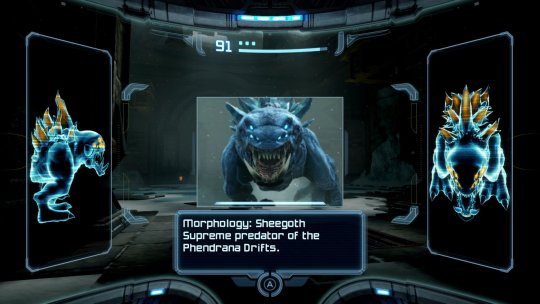


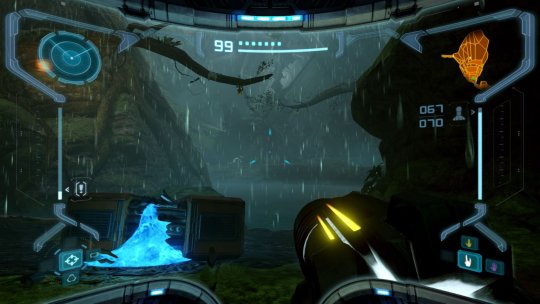

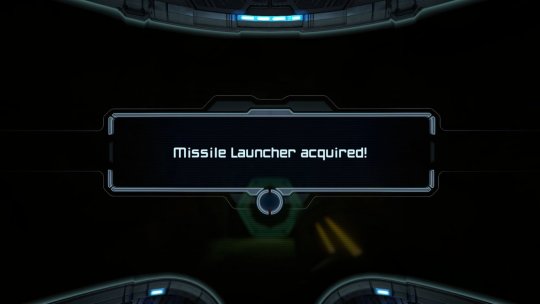

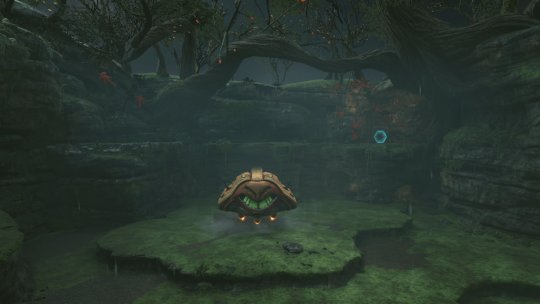

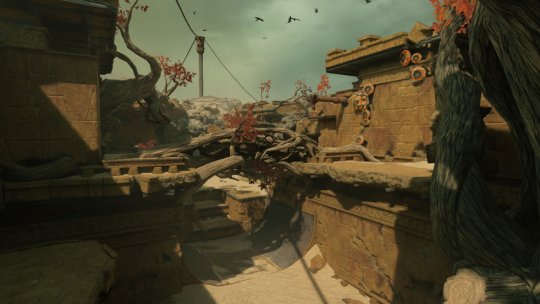

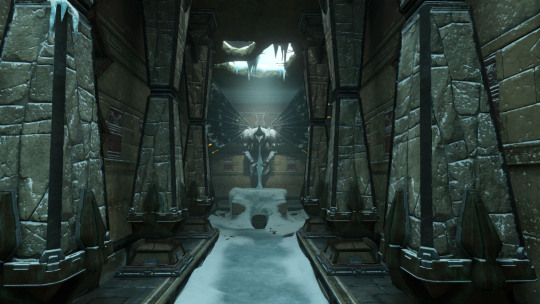

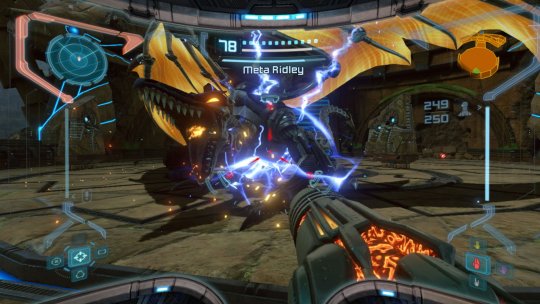
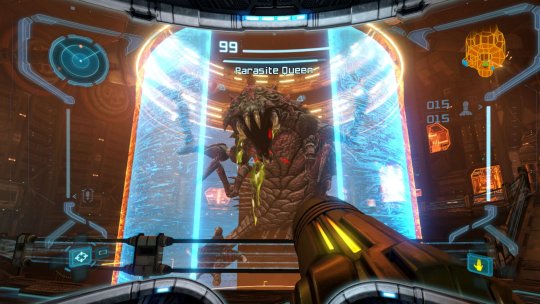
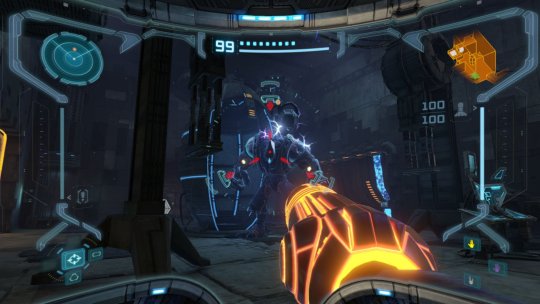
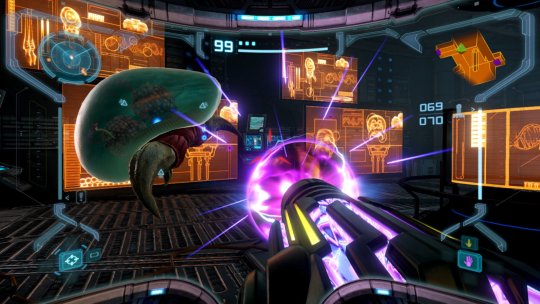

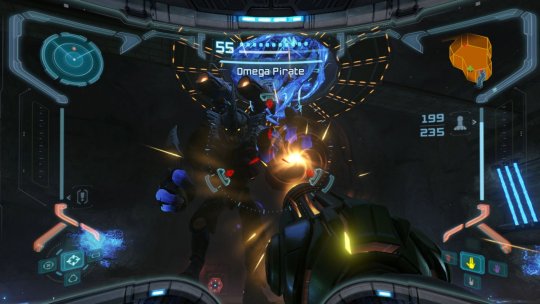

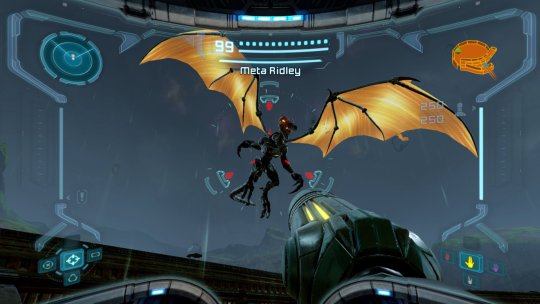
Screenshots
Overview
About
Suit up for an iconic adventure.
Intergalactic bounty hunter Samus Aran receives a distress signal from a wrecked frigate in orbit around planet Tallon IV. Upon investigation, the frigate reveals itself to be a Space Pirate research vessel home to terrifying genetic experiments using the mysterious Phazon substance. There, Samus encounters her nemesis, Meta Ridley, whom she pursues to the surface of Tallon IV. It’s up to her alone to explore the planet’s interconnected regions, investigate its dark secrets, and end the intergalactic threat posed by Phazon.
Experience this critically acclaimed first-person adventure like never before with remastered visuals, audio, controls, and more.
Tools of the Hunter
Trained as a warrior and infused with Chozo DNA, the indomitable Samus Aran patrols the galaxy as a feared freelance bounty hunter.
Explore some of the Chozo-created weapons and abilities Samus has at her fingertips on this adventure.
Power Suit – An advanced Chozo exoskeleton modified for use by Samus Aran, the Power Suit provides life-support functions and is well shielded from attack. The modular nature of the Power Suit allows for the addition of weapons, Visors, climate resistance, and other gear as needed.
Visors – Signature abilities of the Metroid Prime series, the Power Suit’s selectable user interfaces help Samus analyze and interact with the world around her. The Scan Visor allows Samus to investigate objects and enemies from an accumulated database. Upgrades like the Thermal Visor and X-ray Visor allow Samus to see her environment in new ways.
Arm Cannon – Samus’ main weapon converts her bioenergy into a Beam, which can be fired rapidly or charged up for greater power. Upgrades like explosive Missiles, the electrified Wave Beam, and others can expand her arsenal in essential ways. Many doors can only be unlocked with specific Arm Cannon abilities.
Morph Ball – Samus can transform into Morph Ball form—approximately one meter in diameter—to roll through narrow passages and other hard-to-reach areas. Like the Power Suit, the Morph Ball is modular. There are several modifications that can be added to improve performance, including the Bomb attack and Boost Ball maneuver.
Explore in Eerie Isolation
Journey through the diverse biomes of planet Tallon IV as you uncover the Space Pirates’ sinister experiments and gather information about the toxic substance that left the planet in ruin.
Awe-Inspiring Landscapes – From the quiet stillness of the snowy Phendrana Drifts to the magma geysers of Magmoor Caverns, this alien planet introduces beautifully harsh landscapes and labyrinths.
Scan Your Surroundings – When exploring, the Power Suit visor can interface with machines or uncover helpful information about Tallon IV’s mysterious history. In combat, scanning an enemy can help reveal their weak points.
Interconnected World – As you acquire abilities, revisit areas to uncover different routes and secrets hiding in a beautiful-yet-threatening interconnected world.
Take on Extraterrestrial Terrors
Research some of the deadly forces that Samus encounters on her adventure.
Meta Ridley – Reborn and evolved through Space Pirate technology, Meta Ridley is a fearsome enforcer with several potent weapons fused to it. Meta Ridley is also a formidable melee combatant, making any sort of engagement a risky proposition.
Space Pirates – This species seeks to become the dominant force in the galaxy and pursue technology to help them realize this goal. Ruthless and amoral, the Space Pirates care little for the cost of their ambition.
Tallon Metroid – The effects of Phazon have turned these Metroids—a species of alpha predator native to SR388—into a unique subspecies found only on Tallon IV. A Tallon Metroid will latch onto its prey and drain energy, growing larger as it does.
Parasite Queen – A parasite that has undergone radical mutations due to Space Pirate bioengineering experiments. As a result, its body grew larger by orders of magnitude, and it can fire beam-shaped energy from its mouth.
Remastered for Nintendo Switch
New improvements help Samus Aran’s first-person-adventure debut reach greater heights.
Revamped Visuals and Sound – See—and hear—the classic first-person adventure in a new way with high-definition visuals and modernized, nostalgic audio.
New (and Classic) Controls – Experience Tallon IV with modern dual-analog controls for the first time, as well as nostalgic setups inspired by the original Metroid Prime game for the Nintendo GameCube system and the Metroid Prime: Trilogy games for the Nintendo Wii system.
Multiple Difficulty Options – The Casual difficulty reduces the amount of damage Samus takes in combat, helping you worry less about fighting to focus on exploring.
Bonus Content – Unlock art created during the development of the original game as well as this remaster, a Soundtrack Gallery, and a 3D Character Gallery.
#Metroid Prime#Metroid Prime 1#Metroid Prime Remastered#Metroid#Retro Studios#Nintendo#video game#Nintendo Switch#Nintendo Direct#long post
38 notes
·
View notes
Text
I'm Malice Mizer tunnel-visioned HELP
To conclude my posts, I would like to revisit the topic I started with in my first post about visual kei, this time focusing on one of the most influential bands in the genre, Malice Mizer. This band has achieved several milestones in the movement, with their influence extending beyond music to setting trends in aesthetics and stage presence. Therefore, to wrap up this course, I want to delve deeper into their work, specifically highlighting the importance of the album merveilles for visual kei and Japanese music in general.

Malice Mizer's members with their attire for the Le Ciel video (so iconic omg)
Malice Mizer, a seminal band in the visual kei scene, left an indelible mark with their 1998 album merveilles. Among the standout tracks on this album are Illuminati, Bel Air ~Kūhaku no Toki no Naka de~, Gekka no Yasoukyoku and Le Ciel, each encapsulating the band's distinctive blend of gothic, baroque, and rock elements. The impact of both the album and these songs on the visual kei movement is profound and multifaceted.

Cover for Malice Mizer's third album merveilles (1998).
merveilles arrived at a time when visual kei was gaining significant traction in Japan. The genre, known for its elaborate aesthetics, theatrical performances, and genre-blending music, found a perfect embodiment in Malice Mizer. The band's meticulous attention to visual and musical detail set them apart, and merveilles is a testament to this dedication. The album features a rich tapestry of sounds, including art rock, synthpop, and classical influences, which are particularly evident in tracks like Bel Air ~Kūhaku no Toki no Naka de~ and Illuminati.In 2004, it was named one of the top albums from 1989–1998 by the music magazine Band Yarouze and in 2021, Jamie Cansdale of Kerrang! included merveilles on a list of 13 essential Japanese rock and metal albums, noting that Malice Mizer embraced "antiquated piano and violin fanfare, resulting in symphonic ballads and avant-garde pomp heavier than anything on the airwaves at the time."
Illuminati in particular, stands out for its dark and enigmatic themes. The song's intricate composition, combining gothic rock with classical and electronic elements, exemplifies the band's innovative approach. The accompanying music video further enhances the song's mystique, featuring elaborate costumes, gothic imagery, and a narrative that invites various interpretations. This fusion of audio and visual artistry became a blueprint for many visual kei artists who followed. Music magazine Quelle called merveilles a "gothic masterpiece," a perfect storm of theatricality and musical innovation. Illuminati was particularly noted for its "dark, romantic atmosphere" by JaMe World, contrasting starkly with the playful pop-rock dominating the mainstream at the time.
Furthermore, the visual style of the Illuminati music video had a significant influence on the visual kei scene. In the early 2000s, visual kei bands began adopting stylistic elements from the fetish branch of gothic fashion, such as corsets, vinyl fabric, and spiked collars. This more sexualized appearance can be traced back to the Illuminati video, which featured the band members in BDSM-inspired attire and behavior.

One of the BDSM-inspired attire for the Illuminati video and live presentation (these outfits live rent free in my mind)

Phantasmagoria: an example of the 'fetish' attire influence from Malice Mizer.
The influence of merveilles extends beyond its immediate impact. This album marked the pinnacle of Malice Mizer's success, being their best-selling album, charting high on the Oricon charts, and earning them several national TV appearances. Also, the Japanese pop culture website Real Sound credited Malice Mizer as the first visual kei band to incorporate European aesthetics into heavy metal with the twin guitars in Bel Air ~Kūhaku no Toki no Naka de~.

Gackt in the Bel Air video for the single launched in 1997 and included in the merveilles album.
The album also includes Gekka no Yasoukyoku a hauntingly beautiful track that showcases the band's ability to blend classical music with modern rock. The music video for this song features a gothic fairytale aesthetic, reinforcing the band's commitment to creating a complete visual and auditory experience.

Mana Sama and Közi in Malice Mizer: Gekka no Yasoukyoku (1998)
Le Ciel is another significant track from merveilles, known for its emotional depth and poignant lyrics. The live performance of Le Ciel at the 1998 concert "merveilles l'espace" is particularly memorable. In this concert at the Nippon Budokan, the band utilized a large building as a stage prop, incorporating elaborate theatrics that captivated the audience. Each band member performed skits, with Gackt's performance of Le Ciel being a standout moment. During this skit, Gackt fell to the stage to sing the song and returned to "Heaven" by the song's and concert's end, creating a powerful visual and emotional impact. This concert was a significant success and was released on home video as merveilles (Shūen to Kisū) l'espace. Additionally, the band held their last live performance with Gackt at the Yokohama Arena in July 1998, prior to the announcement of his departure in January 1999.

Gackt s ascent to ''Heaven'' on the cover for the Malice Mizer: merveilles ~Tendency and End~l'espace DVD.
Malice Mizer's success helped to elevate the visual kei genre, pushing it into the mainstream and inspiring a new generation of bands. Groups such as Versailles, Moi dix Mois (founded by Malice Mizer's guitarist Mana sama), and many others have cited Malice Mizer as a pivotal influence. The theatricality and musical experimentation that Malice Mizer championed continue to be hallmarks of the genre.

The vkei and power metal band Versailles (very iconic, highly recommended too)
On a personal note, Malice Mizer holds a special place in my heart (as if you didn't notice haha). Despite the changes the band went through in its relatively short existence, each 'era' highlighted by the presence of different vocalists has something unique and special to offer. None is better than the other in my view; they all contribute to the cohesive whole that is Malice Mizer. Their ability to evolve while maintaining a distinct identity is what truly sets them apart and solidifies their legacy in the world of visual kei and beyond. This is especially evident in the legacy left by merveilles. The album's blend of gothic, baroque, art rock, and synthpop aesthetics with rock music not only defined their unique sound and image but also set a new standard for the genre. As visual kei continues to evolve, the echoes not only of merveilles, but their whole music can still be heard, proving the enduring influence of Malice Mizer's visionary artistry.



Malice Mizer through time, from above to below: ''Tetsu era'', ''Gackt era'' and ''Klaha era''.
No special recommendation for this post, just click on the linked words and enjoy!!
-Francisca Rivera.
2 notes
·
View notes
Text



suriya at japan audio launch (photography by pranav c. subash)
#what happened to his gold framed glasses.. those were so good why doesn't he wear them anymore#he looked great in those#suriya#japan audio launch#tamil cinema#kollywood#mine*#event
10 notes
·
View notes
Text
So many people seem to not know much about Sega consoles outside of the Genesis and Dreamcast, which makes sense given that the Genesis was insanely popular and the Dreamcast was their most recent console. So, I decided to compile all major Sega consoles and add ons as well as all of the major mini consoles that have been released as of 2022 and give some fun facts about them!

First of all, there was the SG-1000, Sega’s first video game console. After having been in the arcade business for years Sega stepped into the home console industry with this quite obscure console which never saw release in the US.
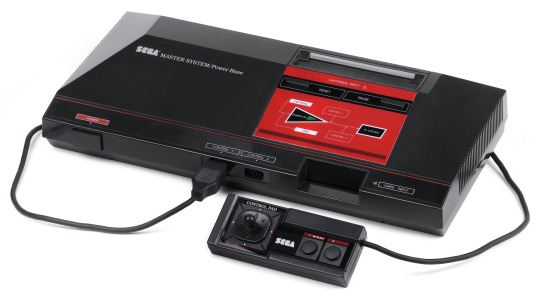
Then there was the Sega Master System, another 8-bit console from Sega. It is essentially a souped-up Sega Mark III, which was a third revision of the SG-1000. The Master System was released globally and is much more well known as the “first” Sega console because of that, despite having been the second. Fun fact, the Master System is still being sold to this day in Brazil!
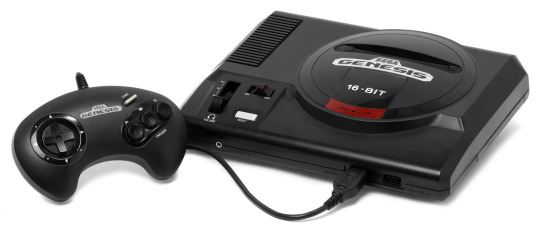
Here it is, the console that briefly beat Nintendo and put Sega on top of the video game industry, the Sega Genesis. The Genesis was far more popular than any Sega console ever released globally, and was especially popular in the US. The Genesis was also home to Sonic the Hedgehog, who would become Sega’s mascot and propel the company from being a relatively successful video game company to being a household name across the globe. Technically an 8-bit version of Sonic was also on the Master System, but obviously the main event is the 16-bit game designed for the Genesis.

This is the Sega CD, a pretty well known add on for the Sega Genesis. With this add on and the Genesis itself, you could play Sonic CD, which is the game it’s easily most well known for. The Sega CD was Sega’s first disc based system, and because of that it was capable of playing much higher quality video and audio than the Genesis on its own.

This is the Genesis 32X, the other major Sega Genesis add on. The 32X is lesser known than the Sega CD, and with good reason as the system had few titles and was essentially rendered obsolete by the Sega Saturn shortly after release. Perhaps the most well known 32X game is Knuckles’ Chaotix, a spin-off of the Sonic the Hedgehog games.
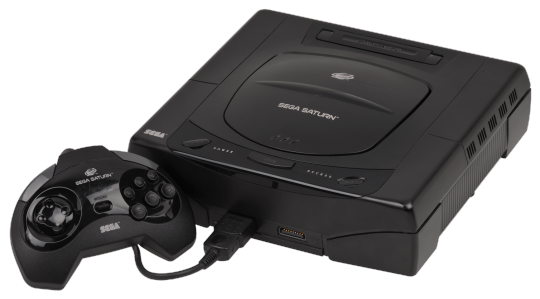
Here’s the aforementioned Sega Saturn. The Sega Saturn was Sega’s most popular console in Japan despite selling quite poorly globally, especially when considering the astronomical success of its predecessor. A big part of the success in Japan was a strong launch with Virtua Fighter, a game that sold almost as many copies as the Saturn did consoles at launch. The Saturn was Sega’s 32-bit console, however of course the 32X having been a 32-bit system lessens the Saturn’s impact in that regard. The Saturn is considered by most to be the console that killed Sega’s hardware business despite not being their final home console due to the fact that the Dreamcast was a console much better positioned to succeed that most likely would have if Sega had not lost consumer trust and interest to Sony with their PlayStation. Any assessment of the Saturn’s popularity is unfair without mentioning the PlayStation. Sony created a console that had far greater third-party support than the Saturn, with games like Final Fantasy 7 being PlayStation exclusive. The Saturn also lacked a mainline Sonic title, having only spin-offs like Sonic R and the collection of the Genesis titles, Sonic Jam. This greatly lessened interest in the console for American players, as Sonic has always been most popular in the West.

This is it. The Sega Dreamcast. Sega’s last true video game console. The 128-bit monster. The Dreamcast was marketed as the ultimate gaming system, and it certainly was when it released. The Dreamcast was by far the most powerful gaming console ever released at the time, and it was a very impressive console. The Dreamcast was affordable and yet incredibly powerful, and it launched in the US on 9.9.99 which was a massive part of its marketing campaign. Major issues with the Dreamcast had nothing to do with it, rather the company that manufactured it, as well as its predecessor. Sega had lost consumer trust with many when they saw how quickly Sega abandoned the 32X for the Saturn, and many had purchased the PlayStation over the Saturn when the time came to upgrade to the next generation consoles. The PlayStation was incredibly successful and its massive install base was very excited for the PlayStation 2. Even with the power of the Dreamcast, and a quality launch lineup of games (in the US at least, as Japan’s launch lineup wasn’t as strong) including Sonic Adventure, the first true 3D Sonic game ever made and an absolute classic, the Dreamcast failed to capture as much interest as the PlayStation 2 did. The console lived in the shadow of a console that had yet to be released. The Dreamcast did do well for its short life before the release of the ps2. The Dreamcast didn’t sell as well as the Saturn in Japan, but absolutely sold far better than the Saturn in the United States. However, once the PlayStation 2 released, Dreamcast sales plummeted. Sega’s Dreamcast had the power and quality games to have been a runaway success, but the stain that the 32X and Saturn left on the company as well as the meteoric popularity of the PlayStation had killed any chance the Dreamcast had to succeed in the way it perhaps should have. Sonic Adventure 2 was in a sense a swan song for the Dreamcast and Sega’s time as a console giant, rather than a monument to the system’s success.

Sega returned to the console business in 2019, but not fully. This is the Sega Genesis Mini, a miniature game console manufactured by Sega with Genesis game ports by M2. The Genesis Mini followed the success of the NES Classic by Nintendo, and Sega followed suit with their Genesis Mini to great success. The mini console was quite popular and sold well, just like the console it was built to resemble. The Genesis Mini has high resolution visuals, outputting through HDMI cables, making it perfect for use on modern televisions. The console’s sound also replicates the Genesis quite well. The Genesis Mini was released with a number of toy accessories such as a Sega CD replica.

Lastly, this is the Sega Genesis Mini 2. The Genesis Mini 2 is modeled after the Genesis Model 2, a revision of the Genesis. The Genesis Mini 2 is capable of playing Sega CD games in addition to a brand new lineup of Genesis games. It released earlier this year, and so I can’t tell you how well it’s done. It’s definitely a more niche console than the first mini, and it was only sold as an Amazon exclusive here in the US, so it’s safe to say it won’t sell as well as the first Genesis Mini. However, the console is just as nice as the first mini. The Genesis Mini 2 features a six button controller as well. The system, like its predecessor, released with a number of toy accessories.

Well, that’s that! Those were all of Sega’s major consoles, add ons, and mini consoles. I don’t know about you, but I certainly hope to see more mini consoles in the future! I’m particularly excited about the prospect of a Sega Dreamcast Mini releasing for the Dreamcast’s upcoming 25th anniversary. I also dream of seeing Sega one day truly return to the console market, but I know it’s a long shot. Thanks for reading if you made it this far, I hope I was able to educate you a bit on Sega’s history as a console developer!
#sega#sega consoles#sg 1000#sega master system#sega genesis#sega cd#32x#sega saturn#sega dreamcast#sega genesis mini#sega genesis mini 2#sonic#sonic the hedgehog#sth#sonic cd#virtua fighter#nintendo#sony#playstation#playstation 2#final fantasy 7#sonic r#sonic racing#sonic jam#sonic adventure#sonic adventure 2#video games#video game consoles#video game history#history
26 notes
·
View notes
Text
Otome visual novel Meiji Tokyo Renka: Full Moon coming to Switch, PC in 2024 worldwide
From Gematsu

Publisher dramatic create and developer MAGES. will release otome visual novel Meiji Tokyo Renka: Full Moon for Switch and PC via Steam in 2024 worldwide with Japanese audio and English, Japanese, Traditional Chinese, and Simplified Chinese subtitles, the companies announced.
Meiji Tokyo Renka: Full Moon first launched for PS Vita on August 25, 2016 in Japan. It is a ported version of Meiji Tokyo Renka, which originally launched for PlayStation Portable, featuring a new route for one of the characters, as well as other new content.
Here is the story synopsis, via VNDB:
The protagonist, a quite normal high school girl named Ayazuki Mei, meets the self proclaimed illusionist Charlie on a night with a red full moon. Due to his hand she travels through time to the Meiji era of Japan. There, where Mononoke had been observed, was a sort of mysterious Meiji Era “Tokyo”.
Following Charlie’s lead, she arrives at the Rokumeikan building. Waiting at the party the protagonist sneaks into are an assemblege of historic personages. Ogai Mori, Shunsou Hishida, Otojirou Kawakami, Kyoka Izumi, Fujita Goro, and Yakumo Koizumi.
During the protagonists interaction with those men, the prized Meiji Era ability to see Mononoke “Tamayori” is awakened within her. Because she holds this power, her relationship with those men evolves…
In an unfamiliar era, an awakening of love blooms by living among these handsome men and interacting with them.
Will the protagonist return to her original time? Or…?
A love that crosses space-time… What could the conclusion be?
Visit the official website here.
#Meiji Tokyo Renka: Full Moon#Meiji Tokyo Renka#dramatic create#MAGES.#otome game#visual novel#Gematsu
113 notes
·
View notes
Video
Sony Playstation 5 Hardware Reveal Trailer
Please! like and subscribe to my channel Youtube
The PlayStation 5 (PS5) is a home video game console developed by Sony Interactive Entertainment. It was announced as successor to the PlayStation 4 in April 2019, was launched on November 12, 2020, in Australia, Japan, New Zealand, North America, and South Korea, and was released worldwide one week later. The PS5 is part of the ninth generation of video game consoles, along with Microsoft's Xbox Series X/S consoles, which were released in the same month.
The base model includes an optical disc drive compatible with Ultra HD Blu-ray discs. The Digital Edition lacks this drive, as a lower-cost model for buying games only through download. The two variants were launched simultaneously.
The PlayStation 5's main hardware features include a solid-state drive customized for high-speed data streaming to enable significant improvements in storage performance, an AMD GPU capable of 4K resolution display at up to 120 frames per second, hardware-accelerated ray tracing for realistic lighting and reflections, and the Tempest Engine for hardware-accelerated 3D audio effects. Other features include the DualSense controller with haptic feedback, backward compatibility with the majority of PlayStation 4 and PlayStation VR games, and the PlayStation VR2 headset.
History
Development
The lead architect of the PlayStation console line, Mark Cerny, implemented a two-year feedback cycle after the launch of the PlayStation 4. This entailed regularly visiting Sony's first-party developers at two-year intervals to find out what concerns they had with shortcomings in Sony's current hardware and how such hardware could be improved in console refreshes or for the next generation. This feedback was fed into the priorities for the console development team. In the development of the PlayStation 5, a key issue was the length of loading times for games. Cerny said several developers, including Epic Games' Tim Sweeney, told him that standard I/O speed of hard disk drives was now a limiting factor in pushing game development. Slow data rates placed limits on the size of data being loaded into the game, the physical location of data on the storage medium, and the duplication of data across the medium in order to reduce load times. An important goal was to find ways to reduce loading time, particularly in games that stream or dynamically load new game areas as the player moves through the game world.
Jim Ryan, the CEO of Sony Interactive Entertainment, stated that Sony had researched the feasibility of a "low priced, reduced spec" version of the PlayStation 5, like what Microsoft had done with its Xbox Series X and its lower-power counterpart the Xbox Series S; and concluded that they believed such consoles do not fare well, becoming obsolete too fast.
------------------------------------------
#hardware #hardwarebustersinternational #hardwares #reveal #ps5games #ps5 #PlayStation5 #PS5 #teardown #deconstruct
#youtube#hardware#hardwarebustersinternational#hardwarestore#hardwareshop#hardwares#reveal#ps5games#ps5#deconstruct#teardown#PlayStation5
3 notes
·
View notes
Text
Pioneer Smart Dashcams With 4K Video, AI Capabilities and ADAS Features Unveiled in India: Price, Features | Daily Reports Online
Pioneer Smart Dashcams have been launched in India. The devices are the latest automotive safety and mobility solutions from the Japan-based audio equipment company and come with several capabilities supported by artificial intelligence (AI). Some of the models also support video recording in 4K resolution, low-light video enhancements, and Advanced Driver-Assistance Systems (ADAS) features. The…
0 notes